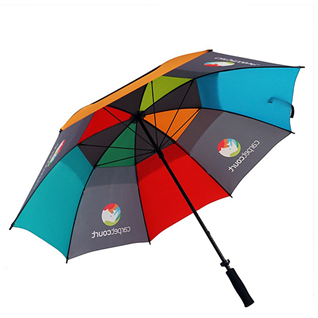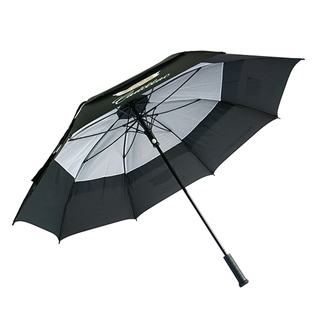+86-0755-27720464
+86-0755-27720464
How Umbrella Manufacturers Adapt to Seasonal Demand
Date:2024-11-28Browse times:1538
Umbrellas are an indispensable part of daily life, offering protection from both rain and the sun. However, like many other products, the demand for umbrellas fluctuates seasonally. While some parts of the world may experience year-round demand, most regions face peak umbrella usage during specific seasons, primarily the rainy or stormy months. As a leading umbrella manufacturer, Full have developed strategies to efficiently adapt to these seasonal variations, ensuring a steady supply of high-quality umbrellas while meeting customer needs. Below are some key strategies umbrella manufacturers use to navigate seasonal demand.
A critical aspect of managing seasonal demand is accurate forecasting. Full Umbrella Manufacturers invest heavily in demand forecasting tools that analyze historical sales data, weather patterns, and regional trends to predict spikes in umbrella demand.
Lead Time Adjustments: Based on demand predictions, manufacturers adjust their lead times and production schedules. Longer lead times may be required ahead of peak demand to ensure a sufficient supply.
To handle seasonal demand fluctuations, Full Umbrella Manufacturers maintain flexible production capabilities. They use scalable production processes that allow them to ramp up output during peak seasons and scale back during off-seasons, avoiding overproduction and excess inventory costs.
Outsourcing and Partnering: In order to meet seasonal peaks, manufacturers may also work with trusted partners or outsourcing firms that can temporarily boost production capacity. This is especially useful for handling sudden surges in demand, such as those driven by unexpected weather events.

While the peak demand for umbrellas occurs during the rainy season, there is also a significant market for sun protection umbrellas, especially in warmer climates. Full Umbrella Manufacturers focus on diversifying their product range to ensure they can meet consumer needs year-round.
Seasonal and Themed Collections: Some umbrella manufacturers release seasonal or themed collections, such as special editions for holidays, events, or festivals. This strategy keeps the brand relevant and attractive throughout the year, even during off-seasons.
Efficient supply chain management is essential for handling the fluctuations in demand that come with the seasons. Full Umbrella Manufacturers collaborate closely with their suppliers, logistics providers, and distribution partners to ensure that they can quickly meet increased demand when necessary.
Strategic Distribution Centers: Full Umbrella Manufacturers often maintain multiple distribution centers in different regions, ensuring that umbrellas can be quickly shipped to customers across various locations. These centers help to reduce shipping times and costs, making it easier to meet seasonal demand.
Umbrella manufacturers must also adapt their marketing strategies to align with seasonal demand. Full Umbrella Manufacturers frequently implement promotional campaigns and marketing initiatives designed to boost sales during peak seasons and maintain interest during the off-season.
Targeted Advertising: Using digital marketing strategies, manufacturers target specific regions based on weather patterns. For example, if a region is experiencing unusual rainfall, a targeted ad campaign promoting umbrellas may be launched.

Adapting to seasonal demand also involves staying in tune with customer preferences and market trends. Full Umbrella Manufacturers continuously gather feedback from customers and analyze market data to improve their products.
Trend Spotting: By observing market trends, such as the growing interest in sustainable and eco-friendly products, manufacturers can adapt their production to cater to changing consumer values, especially during key shopping seasons.
Effective collaboration with retailers and distributors is key to ensuring that umbrellas are available where and when consumers need them. Full Umbrella Manufacturers work closely with these partners to optimize product placement and availability, especially during high-demand seasons.
In-Store and Online Distribution: During peak demand, manufacturers ensure that their products are available both in brick-and-mortar stores and online platforms. With the rise of e-commerce, having an omnichannel distribution strategy ensures that customers can easily purchase umbrellas, regardless of their shopping preferences.
As umbrella demand surges during certain seasons, manufacturers face increased pressure to minimize their environmental impact. Full Umbrella Manufacturers incorporate sustainability initiatives into their seasonal production strategies to reduce waste and resource usage.
Waste Reduction Programs: Full Umbrella Manufacturers employ waste reduction strategies in their production process, focusing on reducing excess inventory, reusing materials, and minimizing packaging waste.
Through these strategies, Full Umbrella Manufacturers effectively adapt to seasonal demand while maintaining high-quality production standards. By optimizing inventory management, diversifying their product offerings, and implementing efficient supply chain and marketing tactics, they ensure that customers have access to the right umbrella at the right time, year-round.